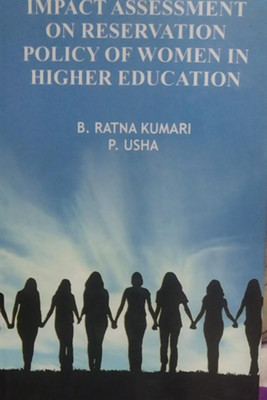Impact Assessment On Reservation Policy Of Women In Higher Education(Hardcover, B. Ratna Kumari, P.Usha)
Quick Overview
Product Price Comparison
Introduction The strategy of affirmative action or positive discrimination had a helpful effect in conditions of induction of Scheduled Castes (SCs), Scheduled Tribes (STs) and Other Backward Classes (OBCS) into public sector employment and in educational institutions. However their accessible share in employment and educational institutions still falls short of the target in certain categories of jobs and higher education. With the growth in the share of scheduled castes and scheduled tribes in public services it had positive multiple effects on the social and economic situation of these two disadvantaged groups. (Sunil Kumar Jangir, 2013). In Andhra Pradesh, 25% of educational institutes and government jobs are reserved for OBCS, 15% for SCs, 6% for STs and 4% for Muslims. The reservation policy in the public sector has benefited a lot of people. The Central government alone has 14 lakh employees. The proportion of Scheduled castes in class III and IV is well above the quota of 16 per cent and in class I and II, the proportion is around 8-12 per cent. With no reservation, the entry of these people in government services would have been doubtful. The situation is similar in education. An article in the EPW (Economic and Political Weekly) estimates that there are seven lakh SC /ST students in higher education and about half of them are there because of reservation. Reservation has certainly helped but there are limitations in any policy with the way it is implemented....


